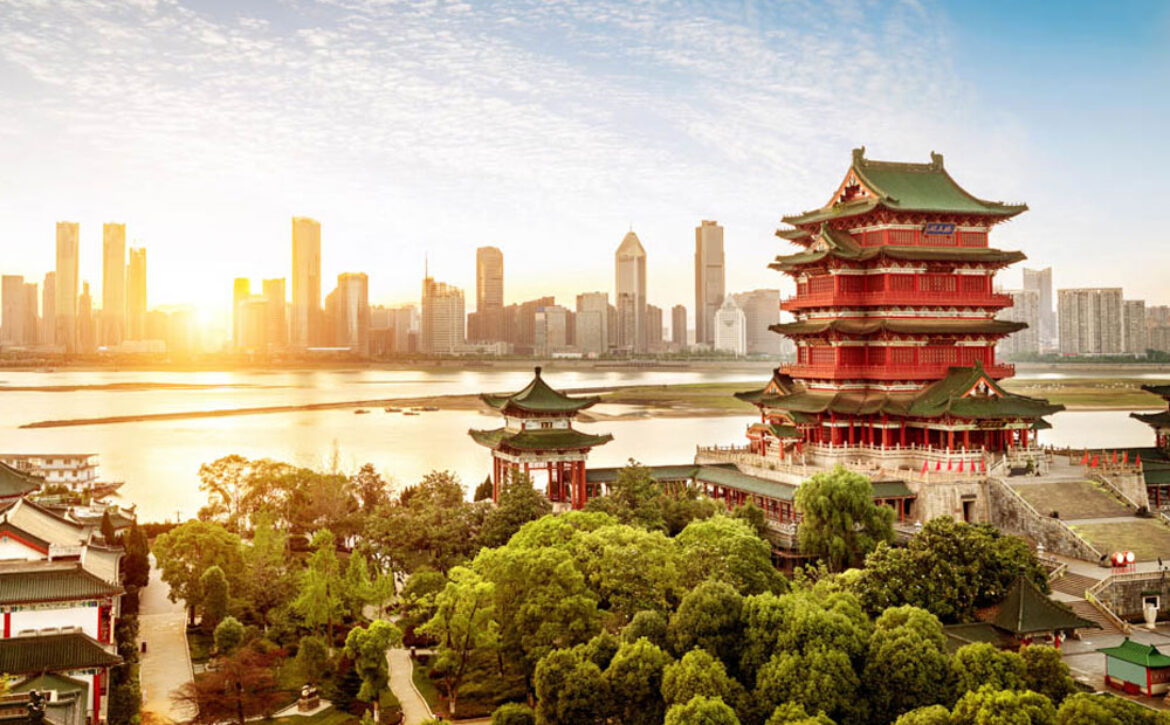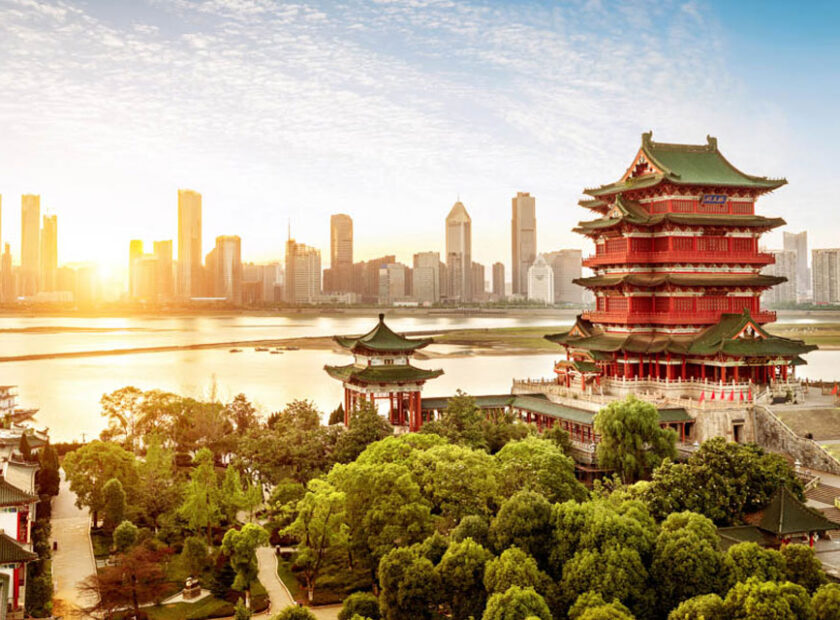China’s One Belt One Road, threat or a major opportunity?

Earlier this year, the first train rumbled down the tracks of a $3.4 billion electric railway connecting landlocked Ethiopia with Djibouti and its access to the Red Sea. The 750-kilometer (466 miles) line, expected to carry up to five million tons of goods per year. Around the same time on a different continent,after 18 days and 28,000 kilometers, the first-ever direct China-to-Britain freight train pulled into London. It passed through Kazakhstan, Russia, Belarus, Poland, Germany, Belgium and France, finally crossing under the English Channel. Inside the 68 containers were household items, clothes, fabrics, bags and suitcases.
Two different continents, two unconnected events you might think….well no, both the trains are the result of a little known Chinese initiative called “One Belt, One Road. The 3.4 billion USD rail road connecting Djibouti to landlocked Ethiopia, was built with Chinese credit, by engineers from China Rail, and use locomotives built by CSR Zhuzhou. The Chinese locomotive that pulled into London was the latest milestone in China’s ambitions to redevelop the old “Silk Road” trade routes from Asia to Europe and a direct result of the One Belt One Road Programme. (OBOR)
When completed, the OBOR will include 60 countries, with two-thirds of the world’s population, 55% of the global GDP and 75% of global energy reserves. It will consist of 900 infrastructure projects, valued at about $1.3 trillion. So, what is this One Belt One Road, that a lot of startled western and some Indian politicians are waking up to? I believe what we may currently be witnessing is a carving out by China of a continental-maritime geo-strategic realm constituted by ‘One Belt and One Road’ initiative.
OBOR manifests the continental dimension of this geo-strategic realm. It consists of a network of rail routes, overland highways, oil and gas pipelines and other infrastructural projects, stretching from Xian in Central China, through Central Asia and Russia, with one artery crossing Kazakhstan and the other through Mongolia but both linking up with the trans-Siberian railway and going on to Moscow, Rotterdam and Venice.
The sea route, known as the “Maritime Silk Road” or simply the “Road,” is made up of ports and coastal development, and begins from China’s eastern ports and goes on to Southeast Asia, South Asia, East Africa and then on to West Asia and the Mediterranean. It embraces Greece and Venice and ends at Rotterdam. Both routes, again recalling the old Silk Road, have a series of loops and branches, with the two main routes also meeting at important junctions, such as Gwadar, Istanbul, Rotterdam and Hamburg.
What drives this massive Chinese investment programme?
“The Vision and Actions on Jointly Building the Silk Road Economic Belt and the 21st Century Maritime Silk Road” (the “Vision and Actions”) issued by the National Development and Reform Commission of The Peoples Republic of China (to give it its full name), on the 28 of March 2015 outlines the initiative’s framework, co-operation priorities and co-operation mechanisms. A typically verbose document, it outlines the benefits that the countries who lie along the OBOR routes will receive from increased connectivity, free trade, new investment, and Chinese technology.
The truth however is that China needs OBOR more than the countries along the OBOR route. In promoting the OBOR, China is being driven by domestic and foreign considerations. Primarily, the urge to achieve development in all of China’s 31 provinces is a major factor, more so, to accelerate the development of the country’s relatively poorer western and southern provinces. It has been reported that a sum of $20 billion is available for infrastructure and cross-border projects in the provinces which will be linked to the ‘Belt’ component of the initiative, in particular Sichuan, Gansu and Qinghai on China’s western flank and Yunnan on the southern flank.
OBOR-related projects will also provide an outlet for China to use its overcapacity in steel, cement and construction materials, as also its surplus financial reserves. On a political and strategic level, especially in an Europe beset with Economic malaise, Chinese money has been quietly buying friends and influencing people. In Malta, the Chinese committed almost 300 million euros to buy 30% of the bankrupt state power utility, while in Greece they snapped up 40% of the strategic port of Piraeus. Hungary, the bad boy of the EU, has been chosen as a key logistics hub on the trans-Siberian link. It will serve as a distribution point for Chinese exports to Europe and an aggregating point for imports from Europe. China Railway International Corporation Ltd on the 23rd of May 2016 announced a USD2 billion project to build a Belgrade Budapest Rail corridor, which would speed up the movement of cargo along the Balkans to a Central European hub.
OBOR and the increase in China’s financial clout
The new financial institutions linked to the OBOR strategy – the US $100 billion Asian Infrastructure Investment Bank (AIIB) and the US $40 billion New Silk Road Fund (NSRF) have been set up. These together with the US $50 billion New Development Bank (NDB) and the US $100 billion Contingent Reserve Arrangement (CRA) represent Chinese backed new financial institutions that are not part of the existing Western dominated financial architecture. They will adhere to the Paris declaration but will not abide by the conditionality driven DAC framework. They are designed to help address issues of infrastructure underfunding, to create new pathways to sustainable development, south-south cooperation and mutually compatible solutions to development problems. The Yuan’s sudden devaluation, coming on top of a sharp correction in China’s stock markets and a slowing economy are an indication that the old model of Chinese growth has reached its peak. China has to restructure its economy from an investment led model to a consumption led model. This is the path that Japan and South Korea followed earlier. But with large State Enterprises and rising debt this is not an easy option. China’s OBOR strategy represents an option to investing abroad and utilising some of this excess capacity.
On the other hand, the financial element of OBOR also allows China to increase its financial clout at the expense of the US dollar, and US dominated financial systems. The US has boycotted all the new Chinese Development Banks, but western allies, notably the UK, have more than made up for it with their unbounded enthusiasm to sign up to OBOR. In return, the UK has become a key platform for the internationalisation of the renminbi, the creation of an off-shore yuan bond market and the spread of Chinese banking in Europe. London has become China’s preferred centre for the launch of yuan-denominated bonds. China has invested in the redevelopment of real estate in the British capital and will guarantee $3 billion for the proposed nuclear power station in Hinckley. Several British banks have been favoured with licenses to operate in China. The British head start is leading to competitive courting by other European financial centres such as Frankfurt and Paris. Thus China sees Europe as helping it to put in place a sophisticated financial network which could underpin the ambitious physical networks that will bind Eurasia.
OBOR and what it means to the man on the Clapham omnibus
Amongst all this strategic manoeuvering, for influence, markets and political control, what does OBOR mean to a simple individual or a company. One of my Group companies, Suez Ports is a beneficiary of OBOR, as we have a concession from the Govt. of Oman to finance, design build and operate, what we hope, will become the largest trans-shipment port in the Middle East. Luckily, we are smack bang on the Persian Gulf part of OBOR, and China Harbour, the world’s biggest Port construction company has agreed to come in and partner with us to build the US1.9billion port. In the same way, I believe that there are huge opportunities for contractors and developers to use the funding initiatives under OBOR to partner with Chinese companies in Europe and Central Asia. For cash strapped European banks, there are opportunities in working with Chinese institutions in advising on Project Financing and Cross border M&A, as well as hedging their currency portfolios with Renminbi . For European consumers, severely shortened shipping routes will mean even cheaper products, though European manufacturers will suffer. Ultimately, we must heed the ancient Chinese proverb, ‘He who sleeps with the tiger must keep one eye open.
By
#ShivShankarNair




Having read this I believed it was extremely enlightening. I appreciate you taking the time and effort to put this informative article together. I once again find myself personally spending a lot of time both reading and commenting. But so what, it was still worth it! Blithe Demetre Morris